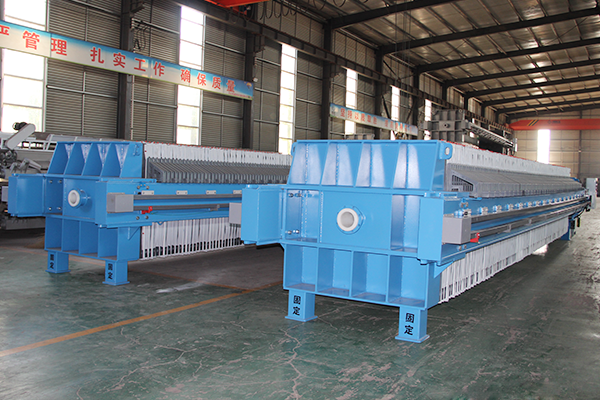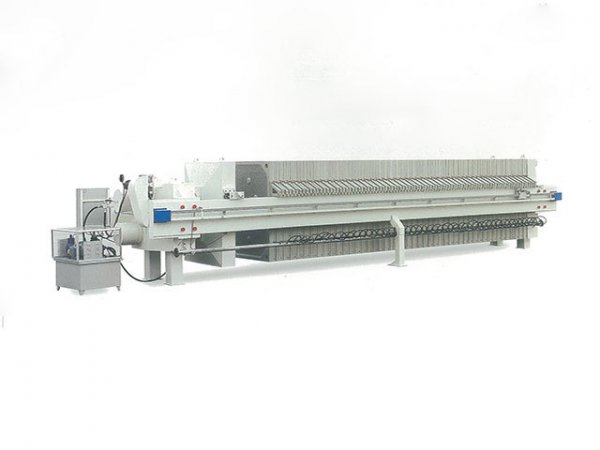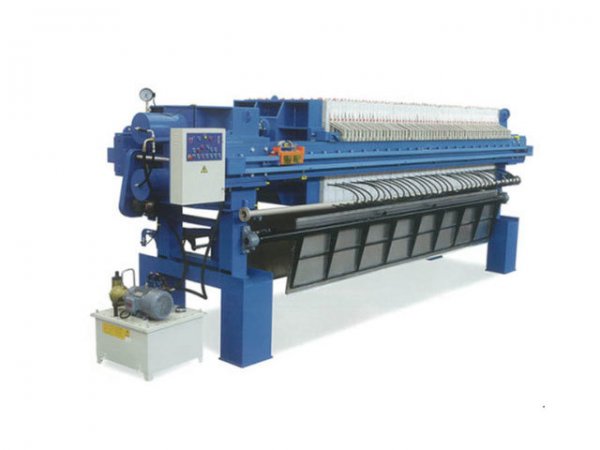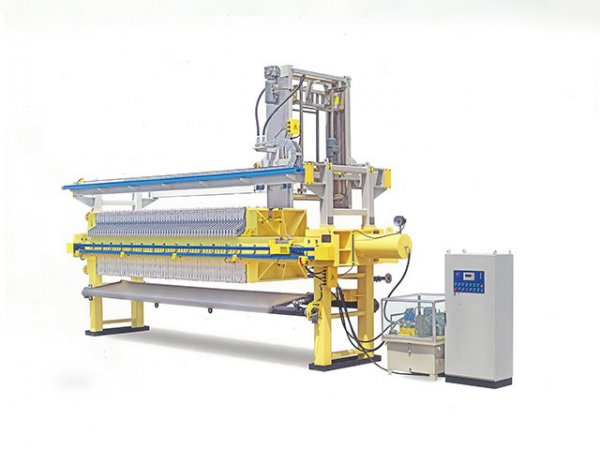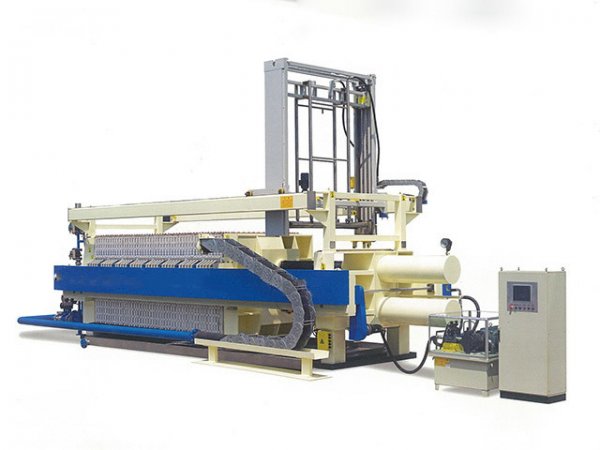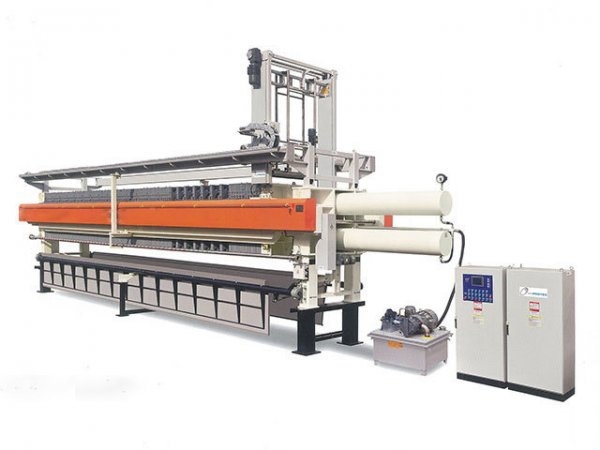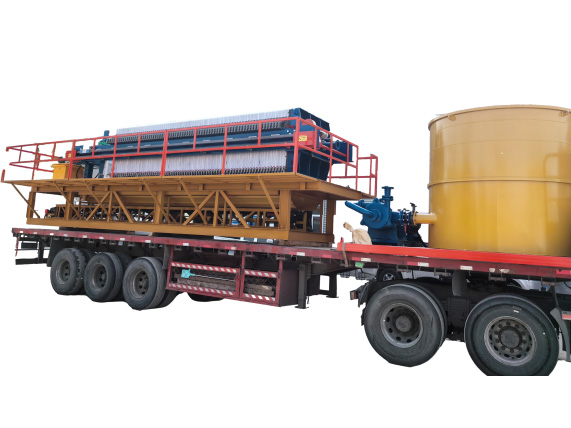NewsDetails
Widespread Application and Remarkable Results of High-Pressure Diaphragm Filter Press in the Mining Industry
author:Shuangcheng time:2025-05-20 00:26:15 Click:143
In the mining sector, solid-liquid separation is a critical process in ore processing, directly influencing resource recovery rates and production efficiency. The High-Pressure Diaphragm Filter Press (HPDP Filter Press) offers an innovative solution for mining solid-liquid separation, leveraging its unique technical advantages to achieve widespread adoption across the industry. This article explores its application characteristics, notable outcomes, and key operational considerations in mining.
1. Introduction: Demands and Challenges of Solid-Liquid Separation in Mining
During ore extraction and processing, solid-liquid separation is essential for mineral purification and tailings management. Traditional filtration equipment often struggles with low processing efficiency, high filter cake moisture content, and inadequate resource recovery, failing to meet mining operations' demands for efficiency, environmental compliance, and cost-effectiveness. The HPDP Filter Press, with its high-pressure capabilities and deep separation performance, has emerged as an ideal solution for addressing mining solid-liquid separation challenges, playing a pivotal role in enhancing mining productivity.
2. Technical Foundations of the High-Pressure Diaphragm Filter Press
2.1 Structure and Components
The HPDP Filter Press consists of:
Filter Plate Assembly: High-strength filter plates covered with filter cloths to form filtration chambers.
High-Pressure Hydraulic System: Provides robust pressure to ensure tight filter plate closure.
Elastic Diaphragm Layer: Expands under high-pressure media (e.g., water or air) to compress filter cakes.
Control System: Enables precise regulation of operational parameters.
2.2 Operating Principles
During operation, ore slurry enters the filtration chambers under pressure. Liquid passes through the filter cloths and exits, while solid particles are retained to form filter cakes. Subsequently, high-pressure media is injected into the diaphragm layer, causing it to expand and squeeze the cakes, expelling residual liquid to achieve deep solid-liquid separation. This dual-action "filtration + squeezing" mechanism significantly enhances separation efficiency and effectiveness.
3. Application Advantages in Mining
3.1 Efficient Processing of Complex Slurries
Mining slurries often have complex compositions. The HPDP Filter Press, driven by high pressure, effectively handles high-concentration, high-viscosity slurries, rapidly achieving initial solid-liquid separation and shortening processing cycles.
3.2 Deep Separation Enhancing Resource Recovery
Through high-pressure diaphragm squeezing, filter cake moisture content is significantly reduced, enabling more valuable minerals to be recovered from slurries. This improves comprehensive resource utilization and boosts enterprise profitability.
3.3 Adaptability to Diverse Ore Types
Whether processing metallic ores (e.g., copper, iron, zinc) or non-metallic ores (e.g., coal, phosphate), the HPDP Filter Press adapts to different ore physicochemical properties by adjusting parameters like pressure and diaphragm materials, ensuring stable separation performance.
4. Key Factors Influencing Application Performance
4.1 Material Selection and Adaptability
Filter plate materials must balance high strength and corrosion resistance. In mining environments, factors like ore pH and hardness challenge filter plates. Selecting appropriate materials (e.g., polypropylene, rubber, or composites) extends equipment lifespan and maintains filtration performance.
4.2 Process Parameter Optimization
Pressure Settings: Rationally configure filtration and diaphragm squeezing pressures based on ore properties and separation requirements.
Filtration Time: Precisely control filtration and squeezing durations to balance processing efficiency and cake quality.
Feed Slurry Concentration: Stabilize slurry concentration to enhance equipment operational stability and treatment outcomes.
4.3 Routine Maintenance and Care
Regularly inspect filter plate wear, clean filter cloth blockages, and maintain hydraulic system seals to sustain high-efficiency operation. Promptly addressing equipment failures and risks prevents production interruptions and reduces maintenance costs.
5. Key Considerations for Mining Applications
5.1 Clarifying Mining Production Requirements
Based on mine type (open-pit or underground), ore processing scale, and target separation precision, determine the HPDP Filter Press model, filter plate quantity, and pressure rating to ensure alignment with production needs.
5.2 Supplier Selection Criteria
Choose suppliers with mining equipment R&D experience and reliable product quality. Evaluate their equipment's pressure stability, diaphragm durability, and after-sales service capabilities to guarantee long-term stable operation.
5.3 Equipment Operation Management
Establish standardized operating procedures and maintenance protocols. Train personnel to correctly set process parameters and promptly handle anomalies, fully leveraging equipment performance advantages.
6. Conclusion: A Driving Force for Mining Industry Advancement
The application of the HPDP Filter Press in mining effectively resolves traditional solid-liquid separation challenges, significantly improving resource recovery rates and production efficiency while reducing environmental pressures from tailings management. As the mining industry increasingly prioritizes green and efficient production, HPDP Filter Press technology will continue to innovate, with breakthroughs expected in intelligent control and energy conservation. Mining enterprises should recognize its value, optimally select and apply the equipment, and inject momentum into sustainable industry development.
 Recommended Products
Recommended Products
 Contact us
Contact us
—— Contact:Manager
—— Tel:+86 16632826789
—— Email:sales@hbscfilterpress.com
—— Url:https://www.hbscfilterpress.com
—— Address:West Zone of Economic Development Zone, Fucheng County, Hengshui City, Hebei Province

